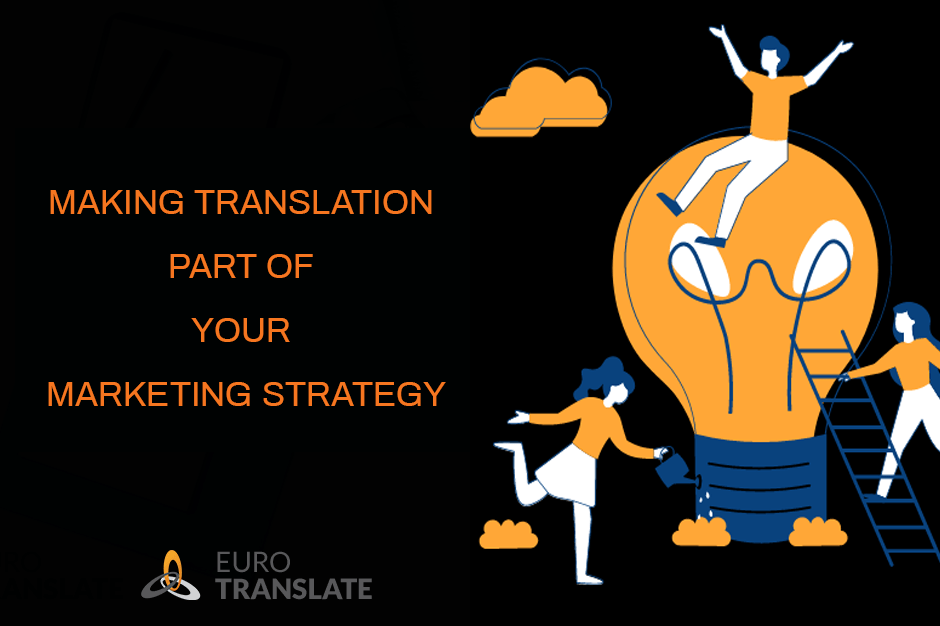
We live in a globalized world where businesses have the potential to reach customers in many different countries and speaking multiple languages. To make the most of this opportunity, companies need to consider making translation part of their marketing strategy. Let us briefly explore the benefits of incorporating translation into your marketing strategy, considerations for translating marketing materials, implementing a translation process, challenges and solutions to translation, and how you can successfully incorporate translation into your overall marketing plan. By taking the time to understand why and how to properly leverage translations when planning your campaigns, you will be able to unlock a powerful new channel for reaching customers in the new markets in a meaningful way.
What your marketing mix needs is…
As marketing professionals, we are constantly looking for new and creative ways to reach our target audience. In particular, cross-cultural marketing presents an evergreen opportunity to engage global customers and expand your business reach in a meaningful way. Making translation part of your marketing strategy is one effective tool that should not be overlooked. There are many benefits of including translation services in your marketing campaigns, so let us help you outline the best practices for making it work for you.
Benefits of incorporating translation into your marketing strategy
Incorporating translation into your marketing strategy is an important step for any business looking to expand its reach. Not only does translation make it possible for you to communicate with customers in their own language, but it can also be used as a core part of your marketing efforts. When executed correctly, translation can help boost brand visibility and recognition, bring more traffic to your website or store, and increase customer loyalty. Additionally, translating content into different languages allows you to target specific demographics that are otherwise inaccessible through traditional means. By making translation part of your marketing strategy, you can open new doorways for reaching potential customers and engaging with them in meaningful ways.
Considerations for translating marketing materials
Translating marketing materials is an essential part of any successful international marketing strategy. When translating your materials, you should keep in mind the needs of your target demographic and their culture. Do research to determine how best to communicate with them in their language, while also adapting the messaging to ensure it’s culturally appropriate. Make sure that any colloquialisms or jokes translate correctly, and pay attention to any nuances or subtle changes in meanings. Your visuals should also be localized and sometimes adapted for the target market. Finally, make sure that you are working with qualified translators, fluent in both languages, but native in a target language and familiar with your industry and your company guidelines so that the message comes across accurately and clearly. And this needs to be given: it is crucial to have all translated materials proofread by a fresh set of eyes!
Implementing a translation process
Implementing a translation process for your business should be part of any comprehensive marketing strategy. Translating your website and other materials into different languages can help you reach a global audience and make sure that no matter where in the world they are, they can access and understand your content. In order to ensure accuracy and reliability of the translations, it is important to work with an experienced and reliable language service provider who understand all aspects of the localization process. From selecting the right target languages to use, to adapting culture-specific references and formatting, this partner will ensure that your content is accurately translated every time.
Challenges and solutions to translation
When implementing translation into your marketing strategy, there are a few challenges to consider. Firstly, translations take time, which can require additional human resources and costs. Secondly, you need to make sure the translation is accurate and localized for the target market. Lastly, if you’re targeting multiple countries with different languages, multilingual capabilities will be required throughout your entire process.
Fortunately, there are plenty of solutions available to address these issues. Investing in professional translation services that provide quality assurance will help ensure accuracy and localization for each language. Setting up a foolproof localization management system could also streamline costs and increase efficiency when creating multilingual campaigns across many markets. Although some challenges may arise when implementing translation into your marketing strategies, the results are well worth the effort when considering better customer engagement and expanding reach into new markets.
It all comes down to a Customer
In conclusion, translation should be a key element of any marketing strategy. Localizing content into the languages of your target audience broadens your reach and allows you to more easily engage and retain customers. Additionally, localized marketing efforts can create a sense of trust with potential customers that in turn could lead to better sales and higher profits. For businesses expanding their operations overseas or targeting multiple markets, investing in professional-grade translation services is essential for a successful, comprehensive marketing strategy.
